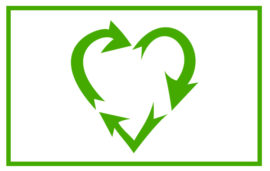We’ve been blogging all this month about “Repeating” the tactics and messages that work for your donors.
And earlier this month I brought up an important question: “how do you innovate when you’re in a culture of repeating what’s worked in the past? Because you have to innovate.”
I Was Wrong, That’s Awkward…
Let me begin by saying that I was wrong about something: you don’t have to innovate.
This might be controversial, but most nonprofits should not be innovating.
In my experience, the vast majority of nonprofits should focus on the basic building blocks of solid donor communications and fundraising before they try to innovate.
Most nonprofits should “learn the rules like a pro so you can break them like an artist” (eternal thanks for that quote, Picasso). Most nonprofits should take advantage of the incredible body of knowledge that’s been built up over the last 60 years for how to raise money effectively.
Listen, if you’re raising less than $2 million per year, you probably shouldn’t be innovating. You should focus your time on fundamentals like getting good at Asking, Thanking and Reporting, getting receipts out on time, focusing your time on major donors, having a website that’s good at receiving & tracking gifts, etc.
For instance, say you’re currently sending out 3 appeal letters per year and have a newsletter that doesn’t raise money. My advice would be to send out 5 appeals per year and start raising money with your newsletter before trying something your organization has never done before.
Those are the “long cuts” to success.
Two Paths to Innovation
Ok. You’ve fostered a culture of Repeating: you repeat tactics that work, and you invest the minimum time and money needed to update successful tactics (and not a dollar or minute more).
Then there are two paths to innovation:
- When you update your materials, work to improve We call this “incremental innovation,” and it’s what most nonprofits should be doing.
- Try entirely new tactics. This looks like “launching a Facebook presence” or “trying telemarketing.”
Incremental Innovation
Here’s how you innovate incrementally…
As you update materials you’ve used in the past (e.g., your year-end appeal letter, or your fall event), you do your necessary updates and then ask, “Are there any tweaks we could make so that this works a little better?”
Here are examples of tweaks you can make that almost always work:
- Add matching funds
- Make the language more donor-centric
- Talk about your organization less
- Add a deadline with consequences
- Make the offer more attractive
- Use customized gift ask amounts based on each donor’s last gift
Not very sexy, eh? But it’s how most of the really successful fundraising programs got where they are today. Incremental innovation over time creates a fundraising program that predictably raises more money.
Try New Tactics (but Minimize Risk)
The big idea here is to try new things without putting large portions of your revenue at risk.
Here’s a perfect example from a couple years ago: a nonprofit that regularly raised $50,000 from their Year-End appeal letter decided to not send their letter. They chose to only send emails because email was so much cheaper.
The organization saved approximately $4,000, but raised $25,000 instead of their regular $50,000. Ouch.
Any time you are considering an idea that puts a lot of revenue at risk, your goal should be to minimize the risk as much as possible.
For instance, they could have sent the letter to their Major and Mid-level donors. That’s where about 80% of their revenue came from. That would have guaranteed 80% of the revenue ($40,000!). Then they could have experimented by doing an email-only campaign to the rest of their donors.
And you know what would have worked even better? Sending the letter to all donors, and then sending a follow-up letter, and emails.
When trying something brand new, we usually follow these three principles:
- Determine the “minimum effective dose.” You want to figure out the least amount you have to spend in order to get a test with reproducible results. Maybe it’s a new Facebook presence where you need to spend 15 hours per week and $1,000 per month boosting posts. Maybe that’s a radio campaign where you need to spend $20,000 on spots to really know if the campaign is working or not. Whatever it is, do the research and figure out what you need to do to make your test a good test.
- Have a budget and a timeline. Define exactly how much money and time you’re going to spend on a test. If you don’t have a specific budget and timeline, you’re at risk of over-spending, or getting out too early, or running into conflict because different people in your organization have different expectations. We see this all the time in donor acquisition. Starting to do donor acquisition is hard, and usually takes at least a year to really get going. If you know that but don’t say it, and someone in the organization thinks it’s only going to take 3 months, you’re in trouble.
- Define success. You have to specifically define what success looks like. It doesn’t work to say “we’ve engaged our donors more” or “we’ve built awareness in our community.” You want to use specific metrics like “our retention rate will go up 2%” or “we’ll acquire 250 new donors.” Get specific. As Peter Drucker said, “If you can’t measure it, you can’t improve it.” I’ve watched a LOT of money get wasted on new initiatives where the results weren’t really measurable.
What’s Next for You?
Hopefully this helps you a) think about what you should be doing next to raise more money, and b) avoid the common mistakes many nonprofits make.
Now, make a plan and go get ‘em! And if you want help, get in touch. You can use our experience (from successes and failures we’ve learned from) to move your organization forward faster!



